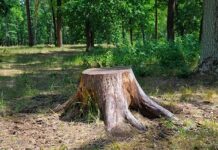“It is the very error of the moon. She comes more near the earth than she was wont. And makes men mad.” – Shakespeare, Othello, Act 6, scene 2.
Ancient stars peek out from black holes
Hiding to avoid confrontation with meteoroids.
The lunatics quiver and quake under numbers etched on stick and steel
Up and down the back hills of ivy, pine needles and briar.
On the campus of St. Elizabeth’s, chartered as the nation’s Hospital for the Insane –
With gardening, farming, outdoor sketching, religious readings, and strolling –
Once the vision of Dorothea Dix, seventy-five buildings stand empty now
Thousands of graves overlooking the Anacostia, nameless bones in the ground.
Farther north, a vale in Massachusetts, numbered posts planted one beneath the next –
Frail chests with broken ribs, spinal fractures, skulls with holes hammered through,
Twisted joints around a ragged, powdered hankie,
Glasses with cracked lenses staring at the dark.
Down in Alabama the Mt. Vernon Hospital for the Colored Insane, more numbered headstones
Built next to an 1828 arsenal, the patients were fed fat back, molasses, and stewed corn.
Eighteen miles southeast of Sioux Falls, the dust stirs. “Idiotic Indians” solemnly walk
To the Hiawatha Insane Asylum seeking the bodies of their medicine men and troublemakers.
From the cemetery of Willard Asylum for the Chronically Insane in New York,
55,000 graves with tin discs simply numbered.
Four hundred suitcases were discovered in the attic.
Modeled on Monticello and home of the West Virginia Lobotomy Project,
The Trans-Alleghany Lunatic Asylum now offers Paranormal Tours at Sunset.
Rockland State Hospital in Orangeburg, NY, treated 9,000 patients on 600 acres:
Sold to JP Morgan Chase for their Data Center.
At Agnews State Hospital, established in 1885 for progressive care, the dead were not named
Nor numbered. Ninety acres sold to Sun Microsystems and a habitat created for displaced owls.
Byberry City Farms in Philadelphia, now closed, abandoned,
The cemetery cleared to make way for “The Arbours at Eagle Pointe.”
No wasted coffins or best dress shirt and tie.
The ones denied a name have only their diagnosis to be remembered by:
Involutional melancholia, habitual excessive drinking, psychophysiologic, lymphatic disorder, occupational maladjustment, congenital syphilis, paraphrenia, hysterical neurosis with somnambulism, hebephrenia, phlegmatic, asthmatic, Lakota horse-stealing mania, catatonic with peculiar mannerisms, inability to adapt.
Rusted file drawers jam on unopened letters and confiscated journals. Look for a given name and death date. Inspect the yellowed names in faded cursive on therapeutic schedule logs:
insulin coma, ice baths, spinning chairs, hydrotherapy in wrapped wet sheets, seclusion and tight restraints, electric shocks, leucotomies, psycho surgery through the eye socket, and chlorpromazine, administered by mouth, rectum, intravenously.
See the photos of faces without expression sleeping against the wall in the dayroom.
In the night sky, a full moon. Feel the pull on the earth beneath your feet.
Try, if you can, to avoid the surge of energy, the tidal force in your body.
Raise a palm to your warm cheek. Write down all your rushing ideas so they won’t escape.
You are not alone.
The nameless dead ascend, limp forward then soar, breaking through the thin clouds.
They rise, shouting their full names into the skies.
And drift from numbered body to body whispering, “It is safe. It is safe.”
Shackled, sterilized, lobotomized, now upright the strangers stand, meet and greet their peers
From across the land – 300,000 acres – of public asylums and state hospitals.
From deep valleys they arise, levitating above the priests with their liturgies of exorcism,
And the doctors with their Diagnostic and Statistical Manuals.
They run up the hills and are not weary. They fly and do not tire or fall.
Look up! Open your SUV and condo windows. Crook your neck and see!
All the shunned ones, missing from scrapbooks, removed from Ancestry trees,
All the ones who swallowed secrets, stuttered, became silent
All the ones never invited to the weddings, graduations, birthdays, bar mitzvahs, and death beds, Deprived of connection, now say “Hello you.”
Squint your eyes now to see them:
the unseen, unheard, unaccepted, unwanted, unrepentant;
the poor, defective, homosexual, peculiar, irrational, lazy, eccentric,
angry, stupid, ugly, foolish, touched in the head, refugee,
balmy, crazy, irrational, moist-brained, temperamental,
the less fortunate, feeble-minded, moonstruck lunatics.
Hear them. The hushed ones who once made an outburst are speaking again.
The ones who mumbled to themselves, turn toward you, and scream.
They shout bad words, sing their lyrics, wind whistling through their broken teeth.
“See me,” they call down.
“Hear me.”
“Include me in your dreams.”
“I’m sorry.” I couldn’t please you.
“I’m sorry.” I told your story with your secrets.
“I’m sorry.” I embarrassed you by being different.
“I’m sorry.” I frightened you because I was so afraid.
“I loved you.” Though you never came back to visit or claim me.
On this night of the full moon, we have returned.
***
Many, many years ago at an Alternatives Conference I went into a dark room in the hotel basement where a young Pat Deegan was showing slides of a cemetery with patient graves identified by only a number. For more than 20 years, I gathered more information, enough for a long essay largely based on my discovery that a job of public asylums was to keep homeless persons off the city streets. My poem is a narrower focus. Why were so many bodies unclaimed by their kin?
***
Bonnie Schell’s self-published memoir of growing up in Atlanta during desegregation came out at the end of 2022: Growing up MAD in the South. Her founding of a drop-in center in Santa Cruz, CA is described in “On Our Own Together: Peer Programs for People with Mental Illness,” “Poetic Justice” pages for Dendron-MindFreedom (1998-2012), and her poetry appeared in Knuts House Press and “Coast Lines: Eight Santa Cruz Poets.” She is on the Board of Altered States of the Arts.
***
Back to Poetry Gallery














